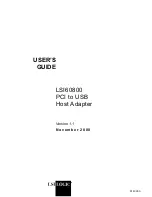
2-3
Cisco Aironet 350 Series Bridge Hardware Installation Guide
OL-1412-01
Chapter 2 Installation
Installation Guidelines
Installation Guidelines
This section describes things to keep in mind when installing your bridge. Sections include:
•
Basic Guidelines
•
Antenna Options
•
Site Surveys
Basic Guidelines
Because the bridge is a radio device, it is susceptible to common causes of interference that can reduce
throughput and range. Follow these basic guidelines to ensure the best possible performance:
•
Install the bridge antenna in an area where trees, buildings, or large steel structures such as shelving
units, bookcases, and filing cabinets do not obstruct radio signals to and from the antenna. The
antennas must be located for direct line-of-sight operation.
•
Minimize the distance between the bridge and the antenna to reduce signal loss.
•
Install the bridge away from microwave ovens or other devices operating in the 2.4 GHz frequency
range. Microwave ovens operate on the same frequency as the bridge and can cause signal
interference.
Antenna Options
The bridge supports external gain antennas with omni-directional or directional capabilities.
Omni-directional antennas are best for systems requiring a signal distribution in more than one direction.
High-gain directional antennas are best suited for covering longer distances in a fixed direction.
Site Surveys
Because of differences in component configuration, placement, and physical environment, every
network application is a unique installation. Before installing multiple bridges, you should perform a site
survey to determine the optimum utilization of networking components and to maximize range,
coverage, and network performance.
Consider the following operating and environmental conditions when performing a site survey:
•
Data rates – Sensitivity and range are inversely proportional to data bit rates. The maximum radio
range is achieved at the lowest workable data rate. A decrease in receiver threshold sensitivity occurs
as the radio data increases.
•
Antenna type and placement – Proper antenna configuration is a critical factor in maximizing radio
range. As a general rule, range increases in proportion to antenna height and gain.
•
Physical environment – Clear or open areas provide better radio range than closed or filled areas.
Also, the less cluttered the work environment, the greater the range.
•
Obstructions
– A physical obstruction such as a building or a tree can block or hinder
communication between bridges. Avoid locating the antennas in a location where there is an
obstruction between the sending and receiving antennas.
















































